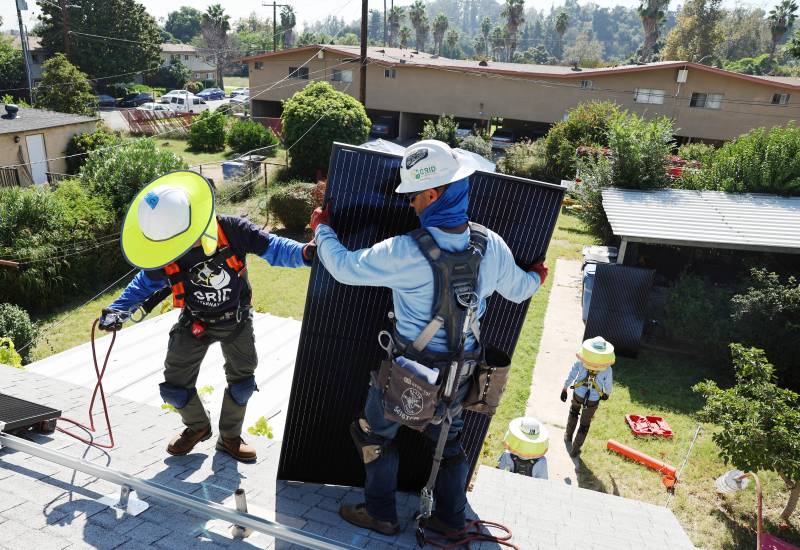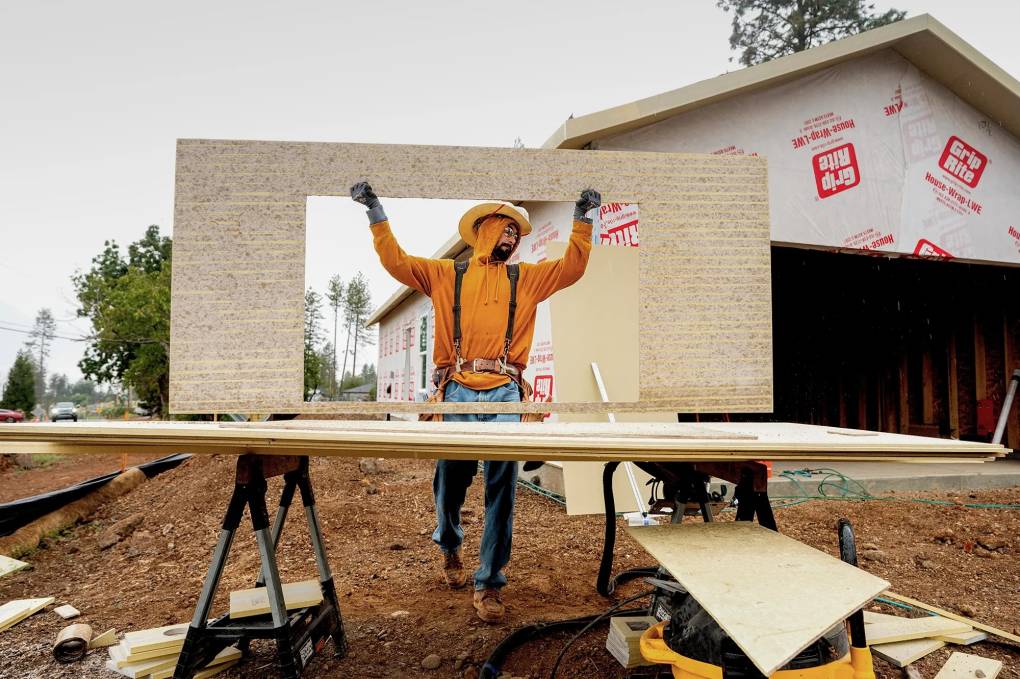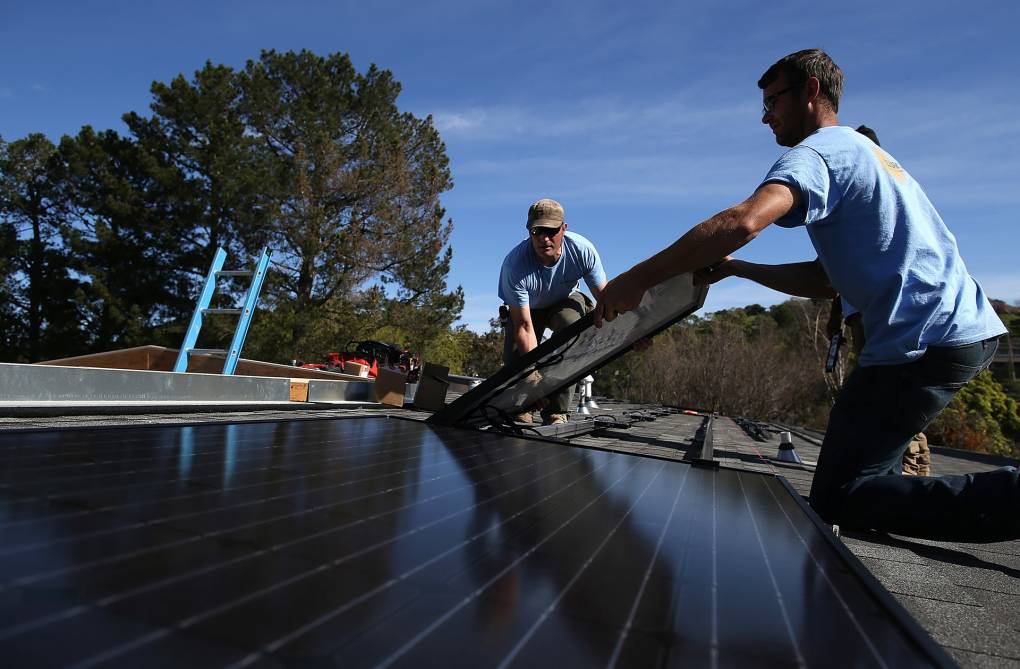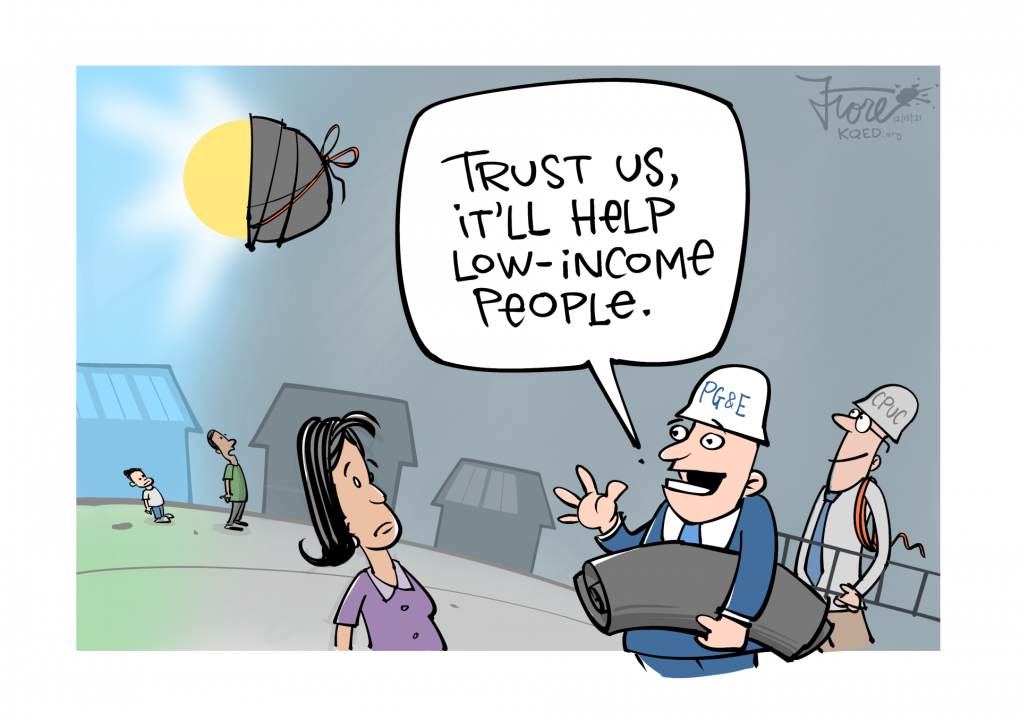But it isn’t just rooftop solar. Widawsky says the money will also go toward batteries that allow solar customers to store their energy. And it will go toward community solar, which allows customers to tap into solar generated at a shared site, like a solar farm.
Community solar is a key way for people with too much shade or who can’t install rooftop solar for other reasons to participate in solar. It’s also helpful for the more than a third of Americans who are renters. Customers typically receive monthly credits for the share of solar they help “produce,” which reduces their utility bills.
Research suggests the Solar for All program could have an impact far beyond the projected 900,000 plus households, says Sanya Carley, professor of energy policy at the University of Pennsylvania. A lot of what inspires solar adoption — regardless of income level — is seeing your neighbors and friends have it.
Solar as a poverty alleviation tool
Most of the Solar for All money will go through state entities like the Michigan Department of Environment, the West Virginia Office of Energy and the Kentucky Energy and Environment Cabinet. Those entities then give grants to lending institutions that fund solar and battery projects and to installers and project developers themselves. Some funding will also go to organizations focused on expanding solar for tribal communities. And some money will go through multi-state programs like GRID Alternatives, the solar nonprofit that helped Salas get solar in California.
Since getting rooftop solar, Salas hasn’t paid more than $165 a year to his utility, PG&E. California households spend about $147 per month on average on their utilities, according to the nonprofit National Energy Assistance Directors Association.
Having solar also allows Salas to run his air conditioning in his increasingly hot neighborhood. “You don’t worry about saying, ‘Oh, I’m going to use a lot of electricity if I use the air conditioning,’” Salas says.
Carley says this is a common scenario. Having solar that reduces energy bills means families put more money toward food, medicine and keeping air conditioning at a setting that’s “livable,” she says.
Also, rooftop and community solar can help households avoid power shutoffs, which are dangerous in extreme heat and cold. “We know that households that have access to solar that can reduce their energy bills are able to avoid disconnections more often than those that don’t,” Carley says.
The EPA estimates the program will produce over $350 million in annual savings on electric bills for low-income households.
Wage requirements and solar scams
Some solar installers working on Solar for All-funded projects will be subject to government requirements to pay “prevailing wages,” which may mean paying laborers more than they currently do. That may add significant costs for those project installers, and it’s still unclear how big they might be, Carley says.
An EPA spokesperson writes in an email that Solar for All provides “explanation and guidance” on the requirements to grant recipients, including helping them access web-based tools to calculate what they need to pay laborers where they operate.
However, Widawsky says there are other hurdles for this program, including predatory lenders that have made some communities wary. “The fact is that there are some unscrupulous characters operating in the solar space,” he says.
The EPA funding will help local governments and communities create lists of reputable solar actors who can use the EPA funding and help build trust in solar, Widawsky says.
As for Salas, he recently spoke with a neighbor about getting solar panels. She told him she didn’t want to waste her time because solar panels were a “scam.”
“I told her, ‘No. It isn’t a scam. I have it, and it helped me,’” Salas says.












